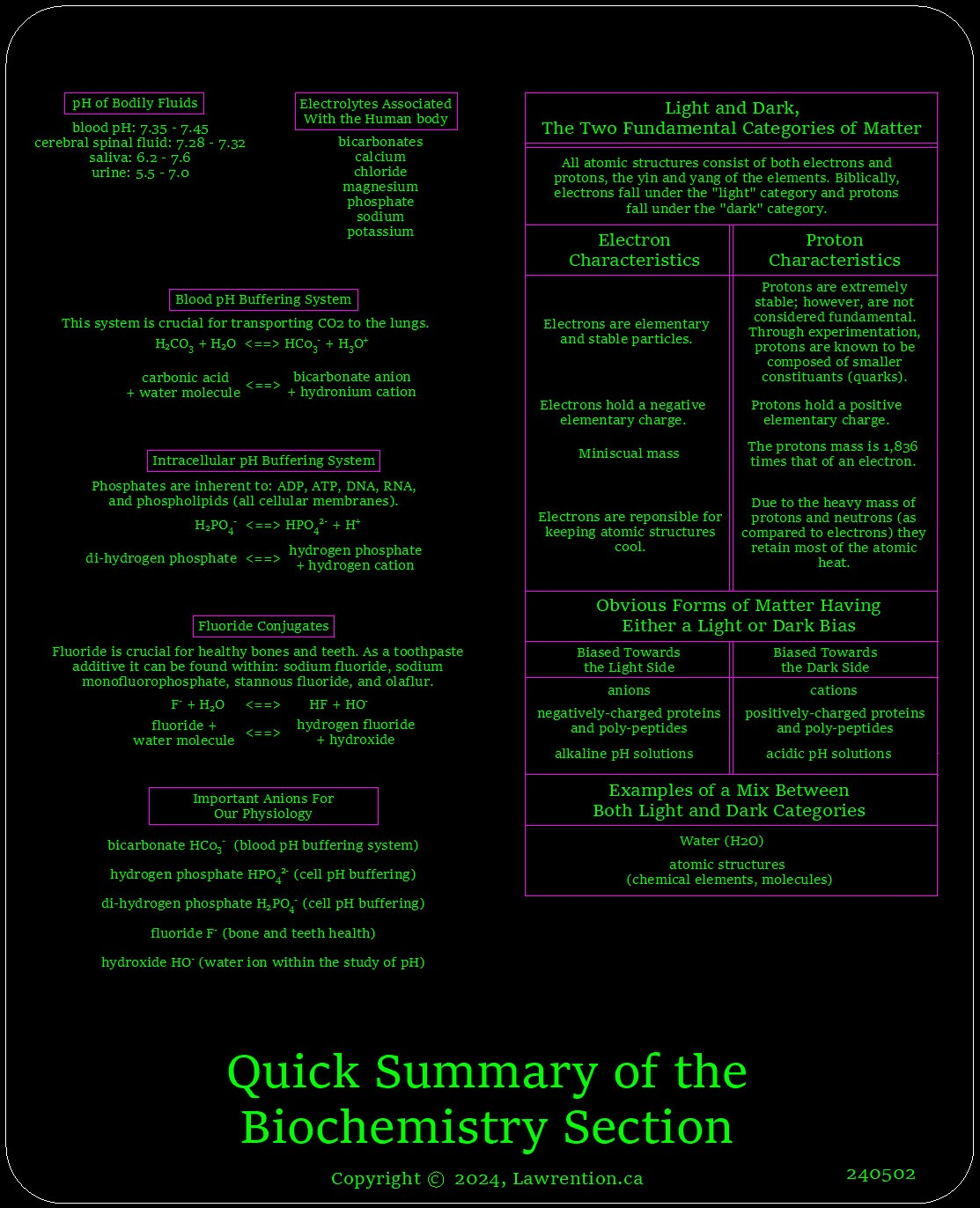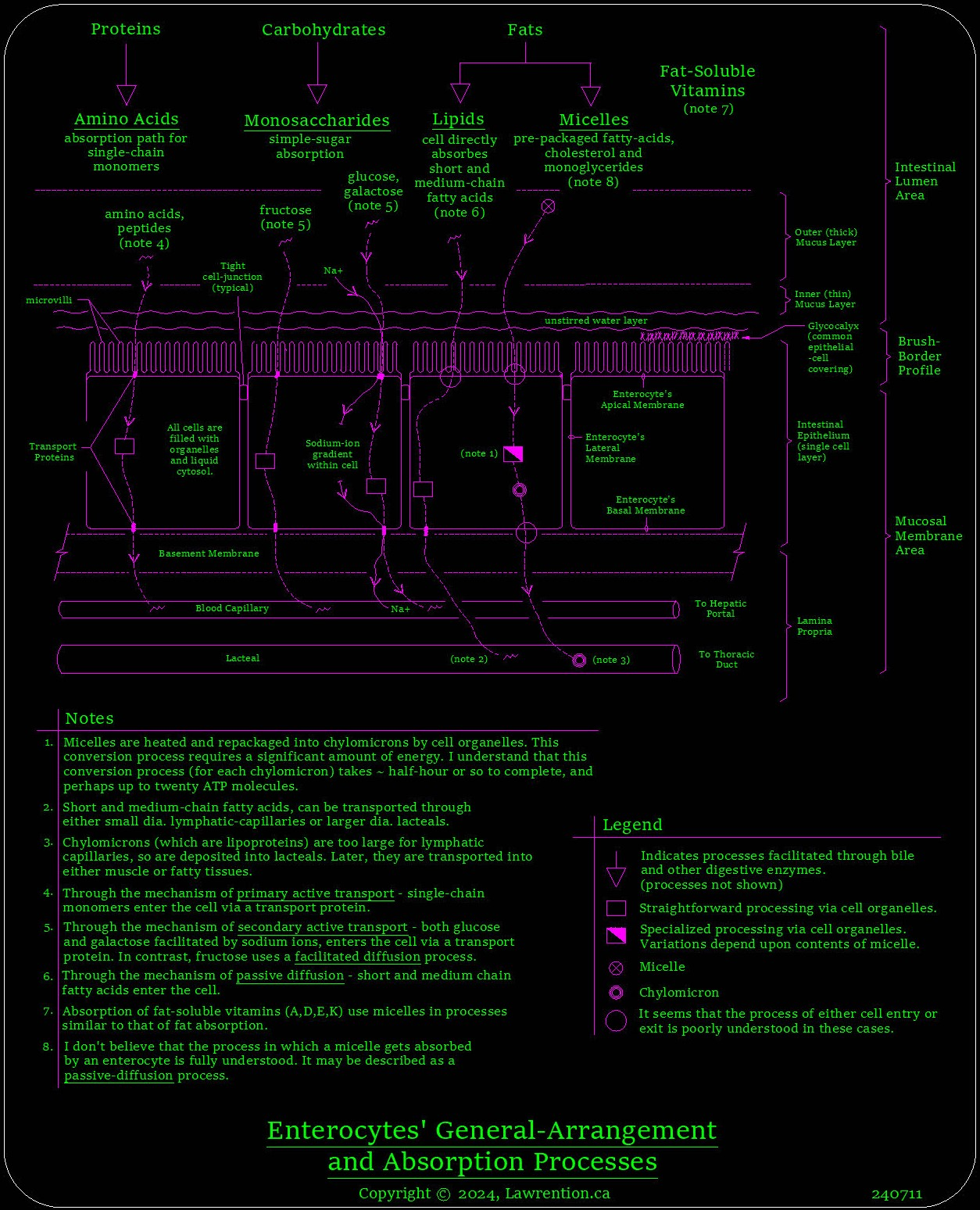Anions and
Section-Four Summary
Section 4.6
(May 2nd, 2024)
| 🇨🇦 | 🕆 | 🇨🇦 | 🕆 | 🇨🇦 | 🕆 | L🇨🇦 |
We have now garnered a basic understanding of pH, electrolytes, and a couple of our body’s essential pH-buffering systems. The drawing below, sums up a lot of what we covered in this section. I took the liberty of displaying the pH level of some bodily fluids in the upper-left corner. There, I’ve added the pH value for cerebral spinal fluid (CSF) as well, as its pH warrants further study.

Certain anions which we focused upon previously are listed below.
- Bicarbonates; which are used for the blood pH buffering system.
- Phosphates; which are used for intracellular pH buffering.
- Fluoride; which is crucial for growth and durability of bones and teeth.
- Hydroxide; a water ion under the study of pH.
On the right side of the drawing, is a chart that compares the two fundamental categories of matter, and is heavily based upon the biblical creation process. I believe the book of Genesis not only describes light, darkness, and water, as forms of matter which we’ve become accustomed to - but is also categorizing particles. From my humble opinion, most of what we understand within our present world which also includes consciousness… can be considered as various aspects of particle interactions.
A large part of the focus within section-four, was to highlight the importance of electrons. They are much more than an electrically-charged particle. An observed ratio of anions over cations, is basically an indication of the underlying ratio of electrons verses protons. In particular, the number of (momentarily) free electrons versus the number of (momentarily) free protons.
In the next section, we will delve deeper into the electron’s characteristics, and discover how it’s used for communications. There are certain aspects of our physiology that is much easier to understand under the umbrella of physics, than that of biochemistry.
Next: 5.1 - The Central Nervous System and its supportive CSF




